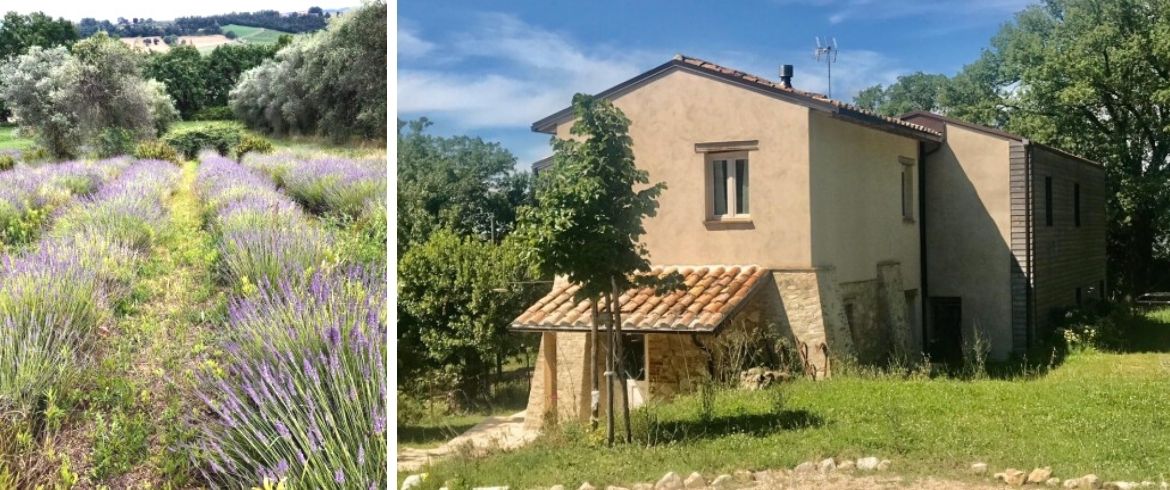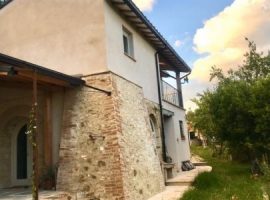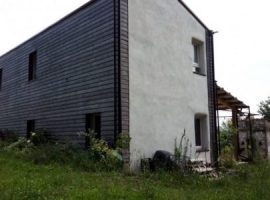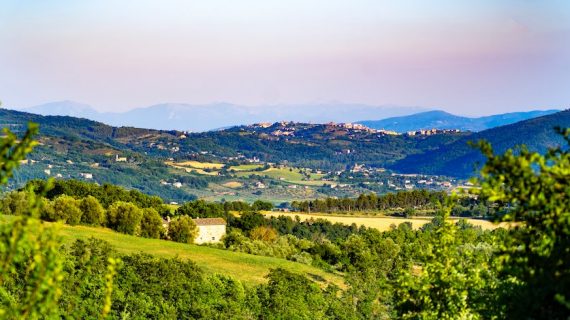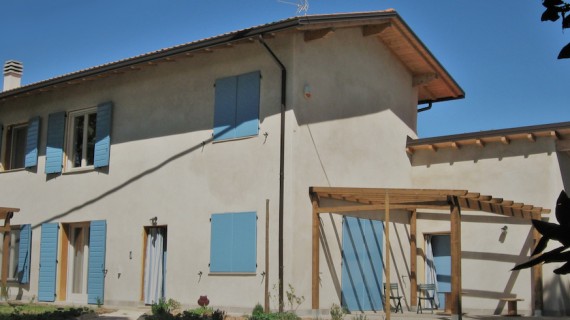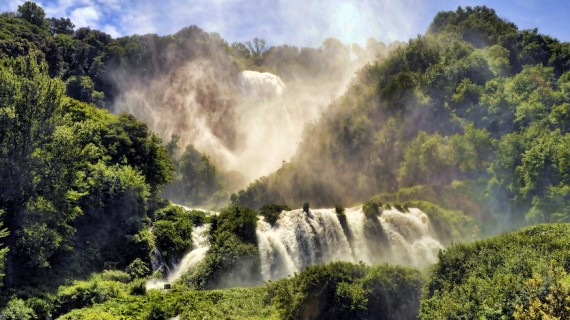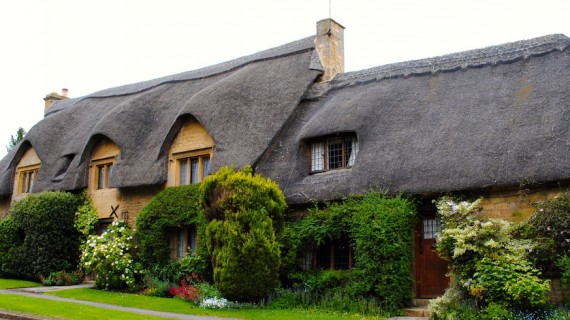Are you curious to know how it feels to live in a straw house? Horti Amerini could be right up your alley. This old building renewed with a wood and straw construction is a great place for keeping cool and relaxing in the Umbrian countryside. Read the interview with Sergio Sampaolo and discover this eco-friendly holiday home in Central Italy
Sergio Sampaolo, an architect and his friend artist, both passionate for nature, came up with the idea of Horti Amerini. This healty and confortable straw house surrounded by nature offers unique holiday experiences, lazing in the shadow of a oak. In addition to all the advantages of a straw house, the location of the holidayhome is strategic for both visiting many cities, such as Rome, Perugia, Todi, Spoleto, Spello, Assisi, Orvieto, and plunging into the nature of the Rieti Valley, the Marmore Falls, enjoying a slow holiday in the name of sustainability.
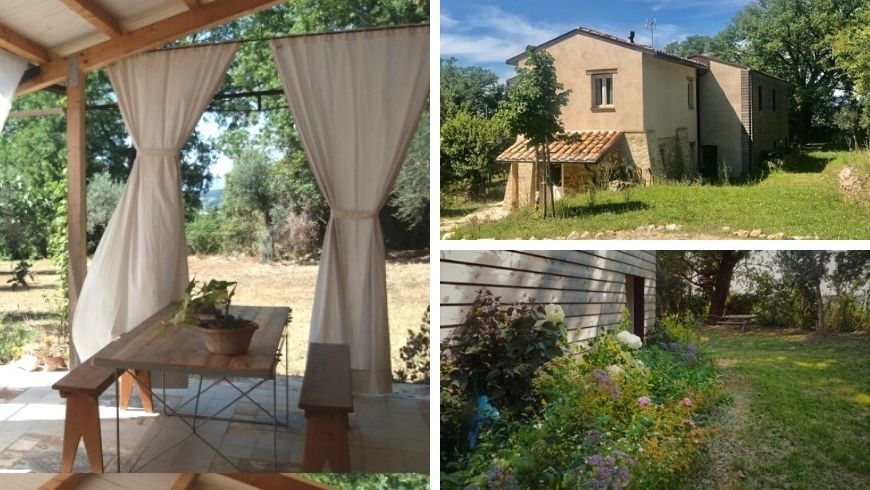
A story of chance and dedication
We had the pleasure of interviewing Sergio Sampaolo, a contrite architect but with the steady desire to descover new ways of building in harmony with the land. After a bunch of difficulties, the project has been completed: let’s find out the creation process of this beautiful ecological cottage immersed in the peace of the Terni countryside, in the Umbria region.
How did the Horti Amerini straw house come about?
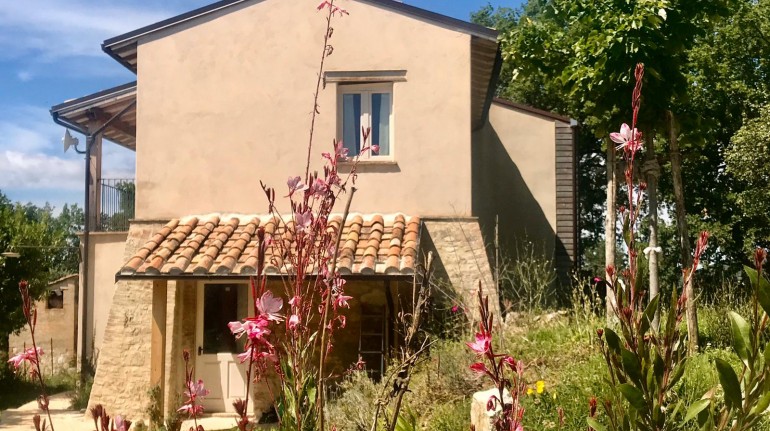
«The Horti Amerini straw house in the result of a chance encounter between an architect in mid-life crisis and some younger men, little prone to the usual path to school, work, career, retirement… After the first, classic decision “I’m going to live in the countryside”, there was only two of us left: me, Sergio, an architect who, although repentant and removed from the register, continued to think about buildings, looking for non-toxic ways for the earth (few people have any idea of how much polluting waste material a traditional construction side can produce everyday…) and Dario, twenty years younger, versatile artist: he plays instruments, sings, paints, but most of all loves every single plant and animal on this planet (including spiders, which I barely tolerate…).»
Which good sustainability practices have you adopted?
«After a lot of researches and attempts all over the Italian territory, we met, again by chance, a local architecture studio. In the hot summer of 2014 began the renovation of the stone farmhouse with a doubling in wood and straw, a building site initially considered of self-construction and sharing, in the style of “let’s love each other, don’t worry, we’ll help you…”. Despite the immediate struggle with the harsh reality of work, money, random estimates, efforts and miracles (always necessary in life), within a year we had the roof, the floor, the windows and, most of all, walls with an earthquake-proof wooden structure, insulated with local straw bales, plastered with lime in the outside and with soil in the inside. Beautiful, cool in the summer and warm in winter, healthy.»
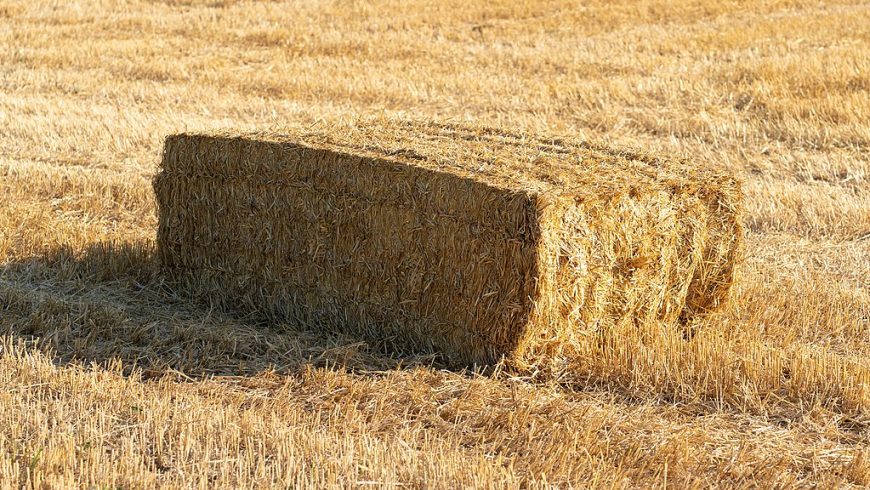
Which benefits and problems have you experienced when choosing straw as a building material?
«Choosing to build an insulated house made of straw does not cause any different issue from those of a traditonal building site. On the contrary, the environment improves thanks to the nearly lack of toxic wastes (e.g. waste of tarred shelths, some inevitable silicone pipes or, even worse, of foam). Builders works better, who will live there will gain in health and in fewer costs in the future.»
«The main problem is often the initial attitude: building a straw house is not like building a tool shed in the garden, with old leftover boards and the help of few willing friends on a couple of weekends… Building a straw house means building a house: it costs money, time, effort, lost hours of sleep, anxiety and fear. Then, it passes and you will start living and appreciating it.»
Which aspects are appreciated the most by your guests?
«You start to appreciate what anyone who comes here appreciates. For almost everyone, the first aspect is the smell: you won’t smell plastic, paint… You will smell familiar scents even if you don’t recognize them, which give you a sense of health, of nature. You will smell the wood, maybe the flax oil used to harden the floor, but what you won’t smell is what strikes you the most. Then, the temperature: if you enter in a hot summer day, at first it seems almost cold. In winter it’s warm, but a different kind of heat: you won’t feel the boil next to the radiator in a cold room, but you will feel a homogeneous feeling of warmth, even if the temperature itself isn’t as high as you might think.»
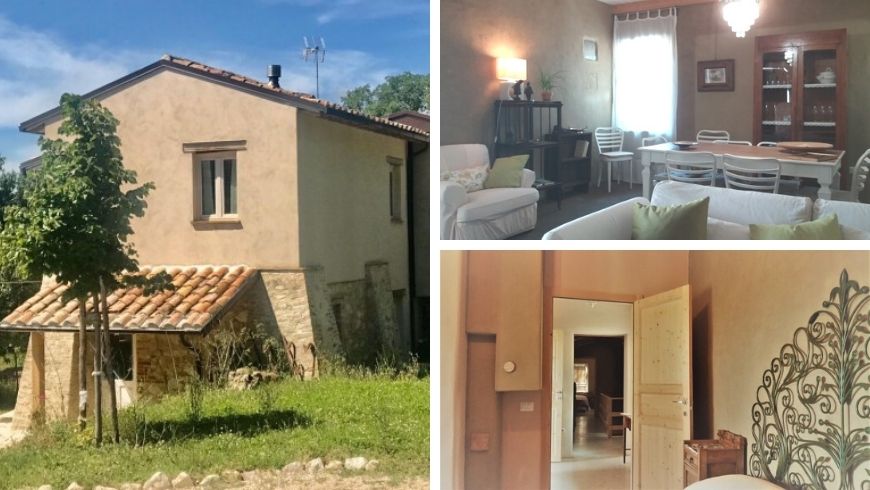
What green itineraries do you recommend not to miss in the surroundings?
«The straw house of Horti Amerini is located in a small farm of three hectares, with olive trees and officinal plants laborously cultivated. In this period we are dedicating ourselves mainly to the natural garden with low water consumption that is slowly growing around the house. A tour with Dario to the garden centre, among the roses and a thousand of plants could last hours, captivated by his descriptions and stories.»
Video by Fabio Patrizi
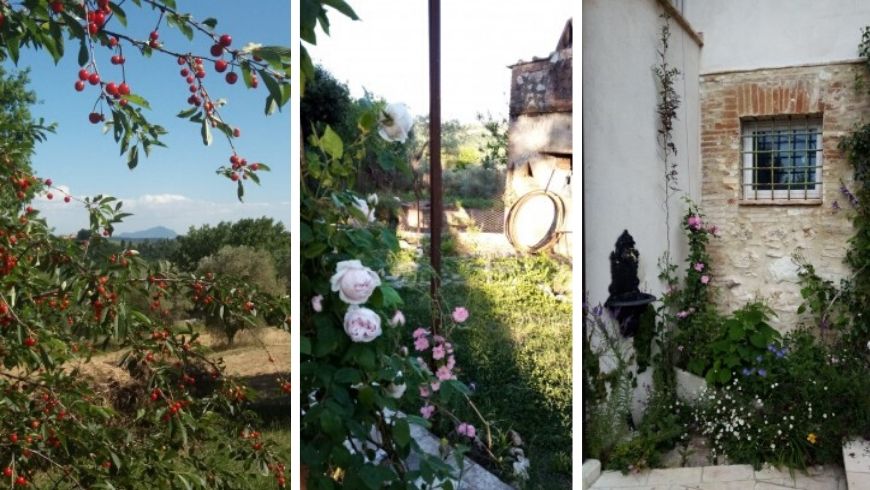
«The house has also a very respectable position in the landscape: protected in the north by oaks, it opens to the south with the hills surrounding Amelia, a classic landscape of central Italy, cultivated with olive trees, vines and wheat since the time of ancient Rome. Then the mountains in the background: from Terminillo to the east, the mountain of Rome, snowy until spring, outpost of the National Parks of the Sibillini and Gran Sasso (in the Marche and Abruzzo regions), the Tiber Valley that in about fifty kilometers reaches Rome, hidden by the distinctive silhouette of Mount Soratte, and then the volcanic peaks of the Cimini Mountains to the west, in the Viterbian Tuscia with the beautiful Viterbo, Civita di Bagnoregio and Tuscania, the north of Lazio that fades into Umbria and Tuscany.»
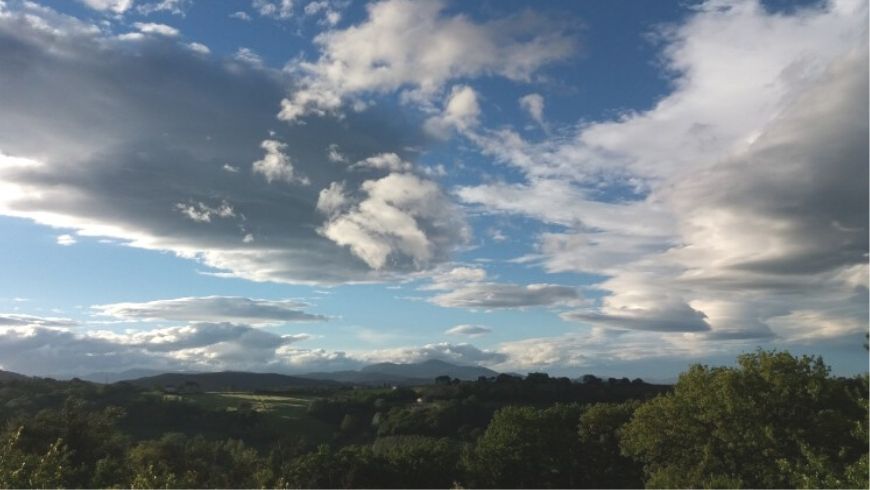
Green Itineraries near Horti Amerini
«The itineraries are too many to list them all:
- Rafting along the rapids of the Marmore Falls is a classic, but also the walks between the hemitages and the Franciscan places of the Valley of Rieti;
- In June, the flowering of lentils in Castelluccio di Norcia;
- A swim in the volcanic lake of Bolsena, or at the Mole di Narni along the river Nera, or in the dozens of spas, springs, pods, hot and cold thermal baths nearby;
- Trekking, horseback riding in the fields or in the woods, or visiting thousands of villages and towns between Umbria and Lazio. So close to Rome but so distance in terms of pace of life, environmental well-being and, last but not least, excellent food.»
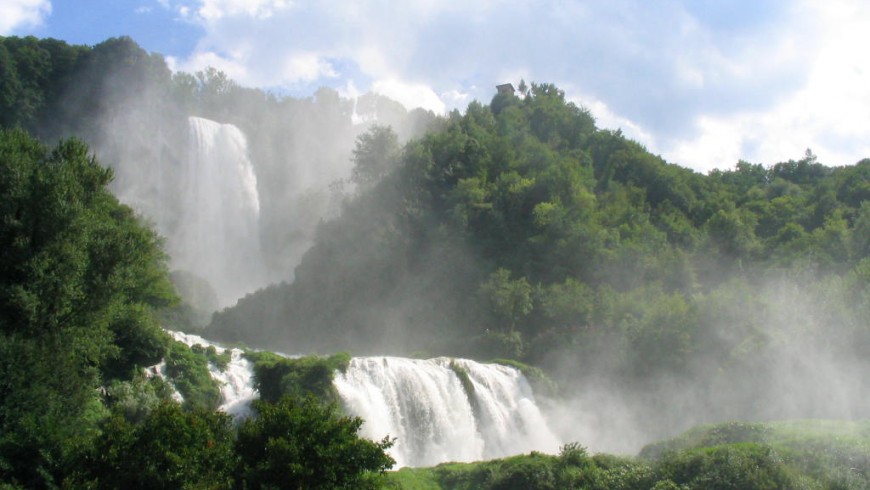
What does being an Ecobnb mean to you?
«First of all, to show that a different, acceptable, comfortable, healthy and respectful way of building is possible. Then, to give the possibility to live an Italy that is often hidden but that everyone already has inside of them, even if sometimes they don’t remember it anymore: the agricultural Italy, the Italy of the countryside (for better or worse), the less careerist and the more caciarona (noisy) Italy. This is said by someone who still loves Rome and will always love it, and who thinks that cities and villages will have to find a balance and mutual respect for the benefit of all.»
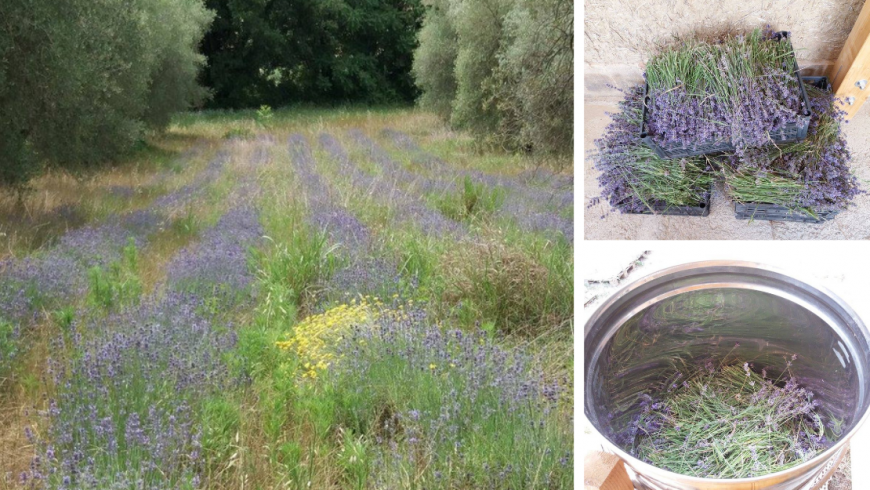
Sustainability also means rediscovering the values of an Italy that knows how to respect and value what nature has in store for us. It means regaining a healthy lifestyle that respects the environment. This is the philosophy that pushed Sergio to give us the opportunity to stay in his straw house and plunge into nature.
Visit Horti Amerini and you will discover with your own eyes the love and commitment given to guarantee you a unique and unrepeatable stay!
